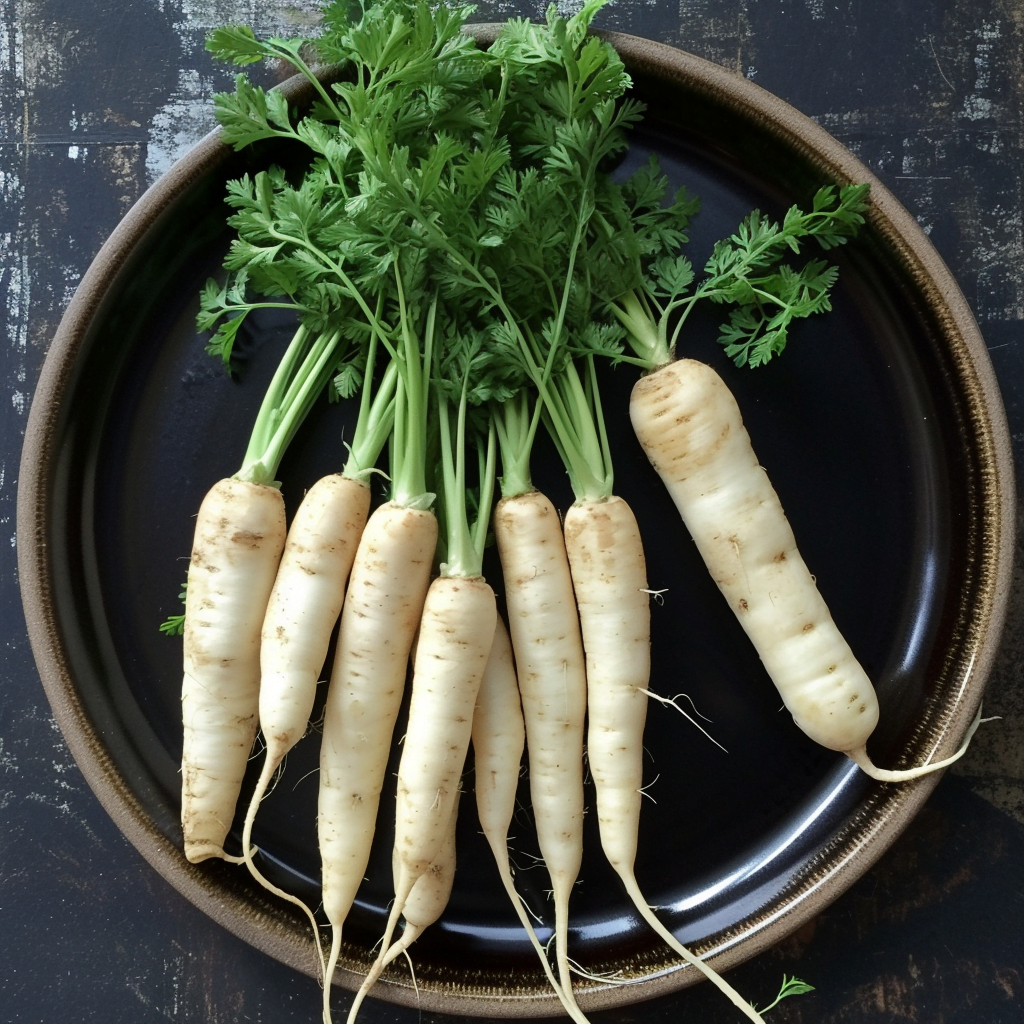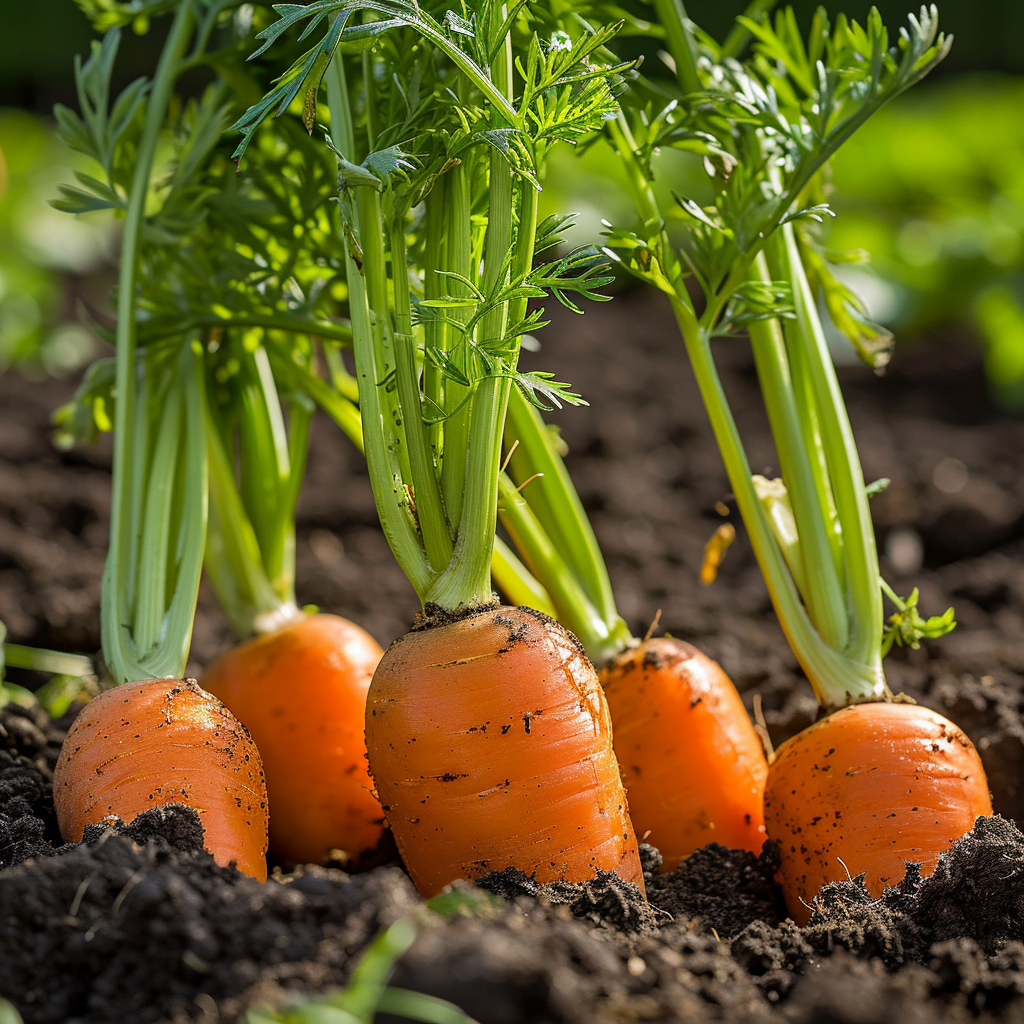Have you ever come across a white carrot and wondered what are white carrots called? Well, these pale vegetables are known as albino or white carrots. While orange carrots may be more commonly seen, white carrots offer a unique and intriguing twist to the usual colorful bunch. In this article, we’ll explore the fascinating world of white carrots, their origins, and the various uses and benefits they bring to the table. So, if you’re curious about these lesser-known root vegetables, get ready to uncover the secrets of what white carrots are called and more!
Origin of Carrots
Development of Carrot Varieties
Carrots have a long history and have been cultivated for thousands of years. Over time, different varieties of carrots have emerged through selective breeding. Farmers and gardeners have carefully chosen the best characteristics of carrots to create varieties that are sweeter, juicier, and more flavorful. This development of carrot varieties has allowed for a wide range of colors and shapes, including the classic orange carrot and the lesser-known white carrot.
Introduction of Carrots in Europe
Carrots were originally cultivated in Central Asia, and it is believed that they were first introduced to Europe by the Moors in Spain during the 8th century. The vibrant orange variety of carrots that we are familiar with today was not the first to be introduced to Europe. Initially, carrots in Europe were more likely to be purple, white, or yellow in color.
The Popularity of Orange Carrots
While white, purple, and yellow carrots were among the earliest cultivated varieties, it was the introduction of orange carrots that truly captured the attention of Europeans. Orange carrots became increasingly popular in the 16th and 17th centuries, particularly in the Netherlands. The Dutch are credited with further developing orange carrots through selective breeding, ultimately leading to the bright orange color that we associate with carrots today. The popularity of orange carrots soared due to their appealing color and their rich flavor, leading to their widespread cultivation and consumption.
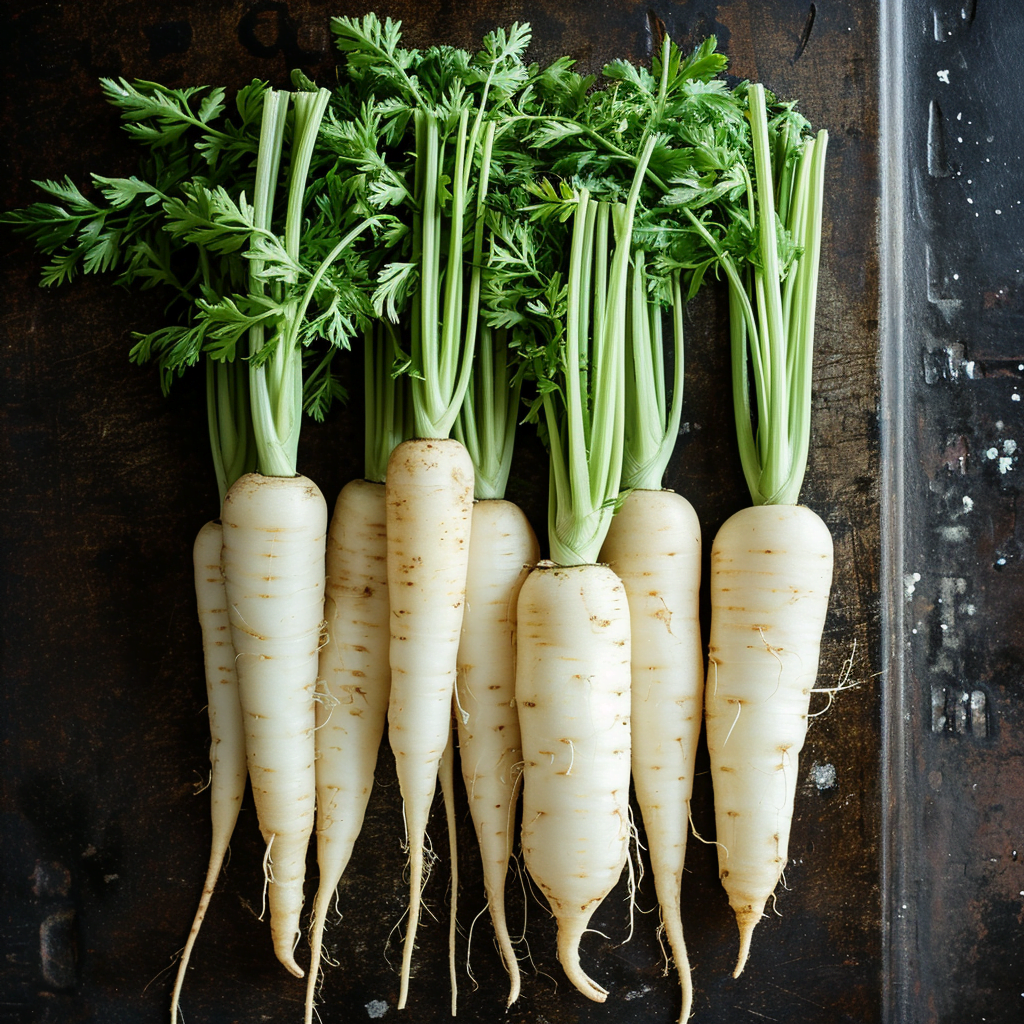
Types of Carrots
Orange Carrots
Orange carrots are the most common and widely recognized variety of carrots. They are known for their bright orange color, which comes from beta-carotene, a pigment that is converted into vitamin A in the body. Orange carrots have a slightly sweet flavor and are incredibly versatile in cooking, making them a staple in many cuisines around the world.
Purple Carrots
Purple carrots are a less common variety but are gaining popularity for their unique color and health benefits. The deep purple color comes from anthocyanins, which are powerful antioxidants that have been linked to various health benefits, including reducing the risk of chronic diseases. Purple carrots have a slightly earthy and sweet flavor, and their vibrant color adds a beautiful touch to any dish.
Yellow Carrots
Yellow carrots, also known as golden carrots, have a similar flavor profile to orange carrots but with a milder and slightly sweeter taste. The vibrant yellow color adds a cheerful touch to meals and can make them visually appealing. Yellow carrots are also rich in beta-carotene and other beneficial nutrients, making them a nutritious choice.
Red Carrots
Red carrots, also called scarlet carrots, have a reddish hue and are slightly sweeter than orange carrots. The intense coloration of red carrots comes from the pigment lycopene, which is a potent antioxidant known for its potential health benefits. The sweet and slightly tangy taste of red carrots makes them a delightful addition to salads, stir-fries, and other dishes.
White Carrots
White carrots may not be as well-known as their orange counterparts, but they offer their own unique qualities. These carrots lack the pigments that give other varieties their vibrant colors, resulting in a pale, ivory-white appearance. While they may seem less visually appealing, white carrots have a delicate, mild flavor that can be quite enjoyable. Let’s delve deeper into the world of white carrots and discover their characteristics, nutritional benefits, and culinary uses.
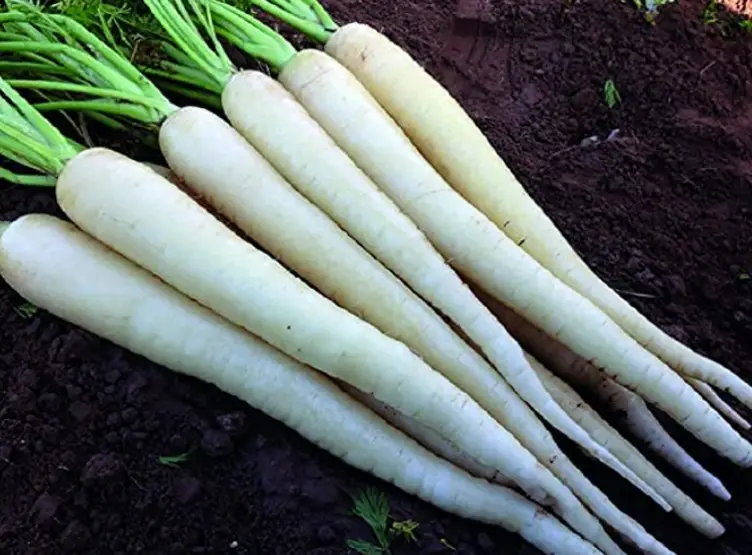
White Carrots
What are White Carrots?
White carrots are a specific variety of carrots that have a distinctively pale appearance due to their lack of pigmentation. These carrots have a smooth texture and a slightly denser flesh compared to other varieties. While their appearance may be subtle, white carrots are known for their unique flavor profile, which is mild, slightly sweet, and pleasantly crisp.
Characteristics of White Carrots
Apart from their lack of color, white carrots share many characteristics with other carrot varieties. They are root vegetables with edible taproots that grow underground. White carrots typically have a cylindrical shape with tapered ends. While they can vary in size, they are generally similar in length to orange carrots. The outer skin of white carrots is thin and smooth, making them easy to peel and prepare for culinary purposes.
Nutritional Benefits of White Carrots
White carrots offer a range of nutritional benefits, much like their orange counterparts. While they may not contain as much beta-carotene, white carrots are still a good source of dietary fiber, potassium, and vitamins C and K. Dietary fiber promotes healthy digestion, while potassium supports heart health and regulates blood pressure. Additionally, vitamin C is essential for immune function, and vitamin K plays a role in blood clotting and bone health.
Culinary Uses of White Carrots
White carrots are a versatile ingredient that can be used in various culinary applications. Their mild flavor allows them to blend seamlessly with other ingredients, adding a subtle sweetness to dishes. White carrots can be cooked, roasted, or sautéed, and they can be enjoyed in salads, soups, stir-fries, and stews. They can also be eaten raw as a crunchy snack or grated and added to coleslaw or vegetable medleys. The neutral color of white carrots makes them an excellent choice for dishes where the focus is on other ingredients or when a visually striking contrast is desired.
White Carrots Terminology
Other Names for White Carrots
White carrots may also be referred to as “white Satin carrots” due to their smooth and satin-like texture. Additionally, they are often simply called “white root vegetables” or “ivory carrots” to distinguish them from the more commonly known orange varieties. It is worth noting that these names may vary depending on cultural and regional preferences.
White Carrots in Different Languages
White carrots are known by different names in various languages around the world. In French, they are called “carottes blanches,” while in Spanish, they are referred to as “zanahorias blancas.” In German, they are known as “weiße Karotten,” and in Italian, they go by “carote bianche.” These diverse names reflect the global reach and cultural significance of white carrots.

White Carrots Historical Significance
White Carrots in Ancient Times
The origins of white carrots can be traced back to ancient civilizations. Historically, carrots were cultivated for their leaves and seeds rather than their roots. Ancient Egyptians, Greeks, and Romans primarily consumed the wild varieties of carrots, which often had a pale or white-colored root. These carrots were valued for their medicinal properties and were used as herbal remedies for various ailments.
White Carrots in Medieval Europe
During the medieval period, carrots gained popularity as a staple food crop in Europe. However, the variety of carrots commonly grown was not the orange carrots we know today, but the white and yellow varieties. It wasn’t until later in history that orange carrots were introduced and became widely cultivated and consumed.
White Carrots in Modern Times
In modern times, white carrots have become less prevalent compared to their orange counterparts. The rise in popularity of orange carrots, which were bred for their vibrant color and sweet flavor, led to a decline in the cultivation of other carrot varieties. However, white carrots have been gaining attention once again as people seek out unique and heirloom varieties of vegetables. Their subtle flavor, versatile culinary uses, and historical significance make them a fascinating addition to any kitchen.
White Carrots vs. Orange Carrots
Differences in Appearance
The most obvious difference between white carrots and orange carrots is their appearance. Orange carrots have a vibrant hue that ranges from deep orange to a lighter golden color, while white carrots lack any pigmentation and have a pale ivory hue. The contrast between the two colors can significantly impact the visual presentation of a dish.
Differences in Taste
White carrots have a mild and slightly sweet flavor compared to the more robust and earthy taste of orange carrots. The milder flavor of white carrots makes them a versatile ingredient that can complement a wide variety of dishes without overpowering other flavors. Orange carrots, on the other hand, have a stronger taste that can add depth and sweetness to recipes.
Nutritional Differences
Orange carrots are known for their high beta-carotene content, which is converted into vitamin A in the body. This makes them beneficial for eye health, immune function, and overall cellular health. While white carrots do not contain as much beta-carotene, they still offer valuable nutrients such as dietary fiber, potassium, and vitamins C and K. Both white and orange carrots have their own unique nutritional profiles, and incorporating a variety of carrot colors can provide a range of health benefits.
Growing White Carrots
Choosing the Right Varieties
When it comes to growing white carrots, it is important to select varieties that are specifically bred for their pale color. Some popular white carrot varieties include White Satin, Kuttiger, White Lunar, White Belgian, and Draco. These varieties are known for their characteristic white appearance and can be found in seed catalogs or from specialty seed suppliers.
Soil and Climatic Requirements
White carrots, like other carrot varieties, prefer loose, well-draining soil. They thrive in full sun but can tolerate some partial shade. Carrots require a minimum of 6-8 hours of sunlight per day to ensure proper growth and development. In terms of climate, they are cool-season crops and can tolerate mild frosts. However, they do best in moderate temperatures between 55-75°F (13-24°C).
Planting and Care Tips
White carrots can be grown from seeds and are typically sown directly into the garden bed. It is important to prepare the soil by removing any rocks or obstructions that may hinder the growth of the taproot. Carrots require consistent moisture to germinate and grow properly, so regular watering is essential. Additionally, thinning the carrot seedlings helps provide adequate space for each plant to develop and prevents overcrowding. Regular weeding is also recommended to minimize competition for nutrients and water.
Popular White Carrot Varieties
White Satin
White Satin carrots are known for their smooth skin and creamy white color. They have a delightfully delicate flavor and a crisp texture. White Satin carrots can be used in a variety of culinary applications and are a great option for those looking to add a unique touch to their dishes.
Kuttiger
Kuttiger is a white carrot variety that is exceptionally sweet and tender. These carrots have a slightly elongated shape and a smooth skin. Kuttiger carrots are often enjoyed raw as snacks, grated in salads, or roasted to enhance their natural sweetness.
White Lunar
White Lunar carrots are known for their striking bright white color. They have a subtly sweet flavor and a crisp texture. White Lunar carrots are a popular choice for fresh eating, as their appearance adds an interesting visual element to dishes.
White Belgian
White Belgian carrots have a cylindrical shape with tapered ends. They have a mild flavor and a tender texture, making them a versatile option for cooking and raw consumption. White Belgian carrots are often favored for their delicate flavor and appearance in recipes.
Draco
Draco carrots are unique in appearance, with their pale white color and purple-tinged tips. They have a slightly sweet and crisp texture, making them an excellent choice for salads and raw preparations. The contrast between the white body and the purple tips adds an aesthetically pleasing touch to culinary creations.
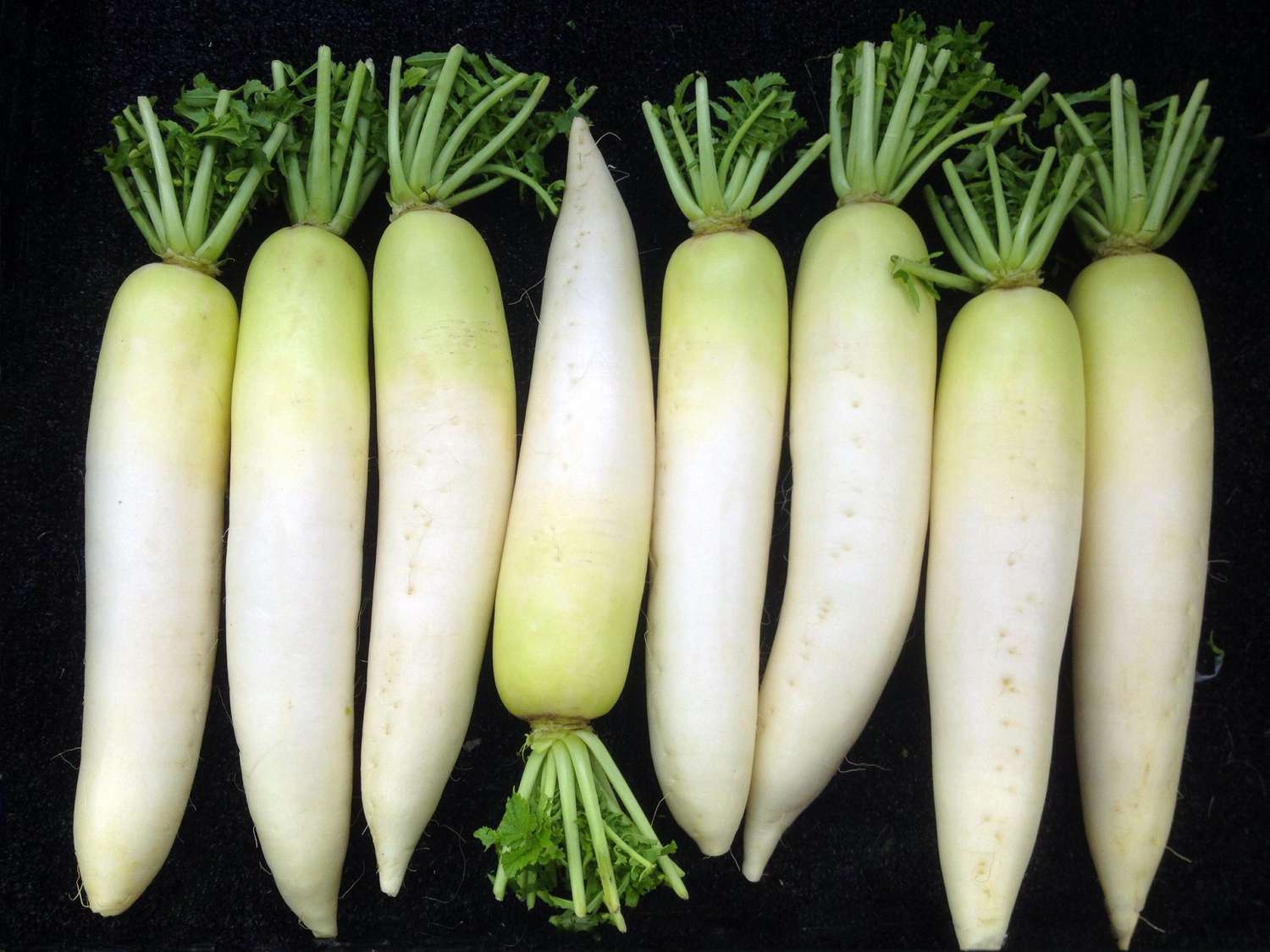
Benefits of White Carrots
Antioxidant Properties
While white carrots may lack the vibrant pigments found in other carrot varieties, they still offer antioxidant properties. Antioxidants help protect the body from damage caused by harmful free radicals and oxidative stress. Although white carrots do not contain as many antioxidants as purple or red carrots, they still contribute to overall health and well-being.
Promote Eye Health
Carrots, including white carrots, are well-known for their potential to promote eye health. While white carrots may not contain as much beta-carotene, they still provide important nutrients like vitamin A. Vitamin A is essential for maintaining healthy vision, particularly in low light conditions. Including white carrots in your diet can contribute to the overall health of your eyes.
Boost the Immune System
White carrots, like other varieties, contain valuable nutrients such as vitamin C and other antioxidants that can help strengthen the immune system. Vitamin C supports the production of white blood cells, which are crucial for fighting off infections and keeping the immune system strong. Incorporating white carrots into your meals can provide a nutritious boost to your immune system.
Support Digestive Health
White carrots are rich in dietary fiber, which plays a vital role in supporting a healthy digestive system. Fiber adds bulk to the stool, facilitating regular bowel movements and preventing constipation. Additionally, fiber acts as a prebiotic, providing nourishment for beneficial gut bacteria and promoting a healthy gut microbiome. Including white carrots in your diet can contribute to a well-functioning digestive system.
Conclusion
White carrots may not be as well-known or commonly consumed as orange carrots, but they offer a unique and nutritious alternative to the more familiar varieties. With their delicate flavor, versatile uses in the kitchen, and historical significance, white carrots provide a distinct culinary experience. Whether enjoyed in salads, soups, or roasted to perfection, white carrots can add both visual interest and a range of health benefits to your meals. So why not give these pale beauties a try and discover the wonders of white carrots for yourself?
